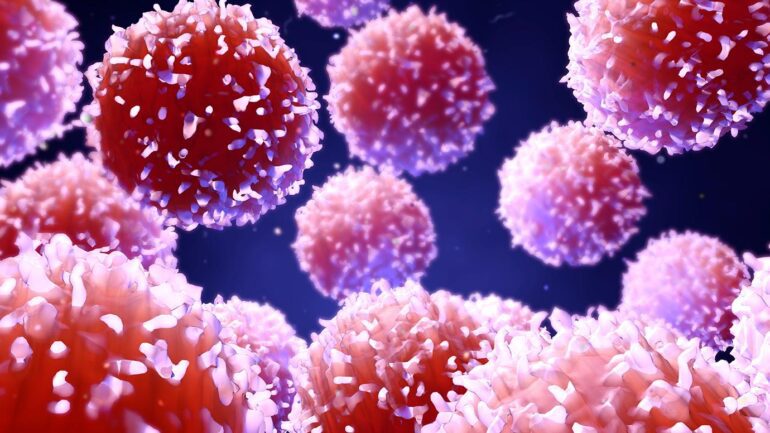TL;DR:
- Johns Hopkins Researchers introduce BigMHC, a revolutionary deep-learning technology for cancer immunotherapy.
- BigMHC accurately predicts cancer-related protein fragments that can trigger immune responses.
- This breakthrough aids in devising personalized immunotherapies and cancer vaccines.
- The technology utilizes deep learning to identify potent neoantigens in cancer cells.
- Empirical tests reveal BigMHC’s superior accuracy in predicting antigen presentation.
- The innovation outperforms existing methods in identifying immune-response-triggering neoantigens.
- BigMHC’s potential in clinical trials paves the way for streamlined immunotherapy development.
- Integration of deep learning in cancer research is a significant leap toward personalized treatment.
Main AI News:
In a monumental stride towards personalized cancer therapy, Johns Hopkins Engineers and Cancer Researchers have jointly forged an innovation of profound significance. Termed BigMHC, this cutting-edge deep-learning technology has the potential to reshape the landscape of cancer treatment by meticulously predicting protein fragments associated with cancer. This dynamic advancement, showcased in the esteemed pages of the Nature Machine Intelligence journal, is poised to surmount a significant obstacle in the realm of tailored immunotherapies and cancer vaccines.
The collaborative team, comprising astute engineers and cancer researchers hailing from diverse sectors within Johns Hopkins, has eloquently demonstrated the prowess of BigMHC. Its innate ability to discern protein fragments residing on cancer cells can potentially trigger an immune response aimed at obliterating these malignant entities. This pivotal stage, orchestrated by the binding of T cells to cancer-specific protein fragments adorning the cell surface, stands as a defining juncture in the trajectory of cancer immunotherapy. By harnessing the supremacy of deep learning, this technology holds the promise of expediting our comprehension of immunotherapy responses and the formulation of bespoke cancer treatments.
The protein fragments that kindle immune responses often emanate from genetic anomalies within cancer cells, termed mutation-associated neoantigens. The unique array of these neoantigens within an individual’s tumor governs the extent of dissimilarity between the tumor and healthy cells. Identifying the most potent neoantigens that galvanize immune responses assumes paramount importance in the customization of efficacious cancer vaccines and immune therapies, guiding the selection of patients for these groundbreaking interventions. However, the conventional techniques for identifying and validating such neoantigens, capable of inducing immune responses, are laborious and financially burdensome, predominantly relying on time-intensive laboratory experiments.
Addressing the dearth of data available for training deep-learning models, owing to the resource-intensive nature of neoantigen validation, the researchers adroitly adopted a two-stage transfer learning paradigm to nurture BigMHC. In its initial phase, BigMHC assimilated the skill to identify antigens gracing the cell surface, a phase replete with abundant data. Subsequently, it underwent meticulous refinement to predict T-cell recognition, a subsequent phase characterized by scarce data availability. This strategic maneuver empowered the researchers to architect a comprehensive model of antigen presentation, subsequently honed to adeptly prognosticate immunogenic antigens.
Validation of BigMHC through rigorous empirical tests across vast independent datasets underscored its exceptional precision in prognosticating antigen presentation, effortlessly outperforming existing methods. Additionally, when applied to data proffered by the researchers themselves, BigMHC outshone seven alternative techniques in pinpointing neoantigens responsible for instigating T-cell responses. This accomplishment not only attests to the remarkable predictive accuracy of BigMHC but also underscores its potential to address the acute clinical necessity for personalized cancer immunotherapy.
As the team embarks on a journey to explore the utility of BigMHC across diverse immunotherapy clinical trials, the technology’s capacity to expedite the identification of promising neoantigens for eliciting immune responses looms ever larger. The ultimate objective is to leverage BigMHC to steer the development of immunotherapies that can cater to a multitude of patients or customized vaccines meticulously tailored to amplify an individual’s immune retort against cancerous cells.
Conclusion:
The introduction of BigMHC represents a transformative leap in the realm of cancer immunotherapy. This groundbreaking deep-learning technology’s prowess in accurately predicting immune-response-triggering protein fragments not only expedites the development of tailored immunotherapies and vaccines but also streamlines the identification of potent neoantigens. The market can anticipate an evolution in cancer treatment methodologies, with personalized approaches gaining traction and potential cost-efficiency becoming a driving force in the ever-evolving landscape of healthcare innovation.

